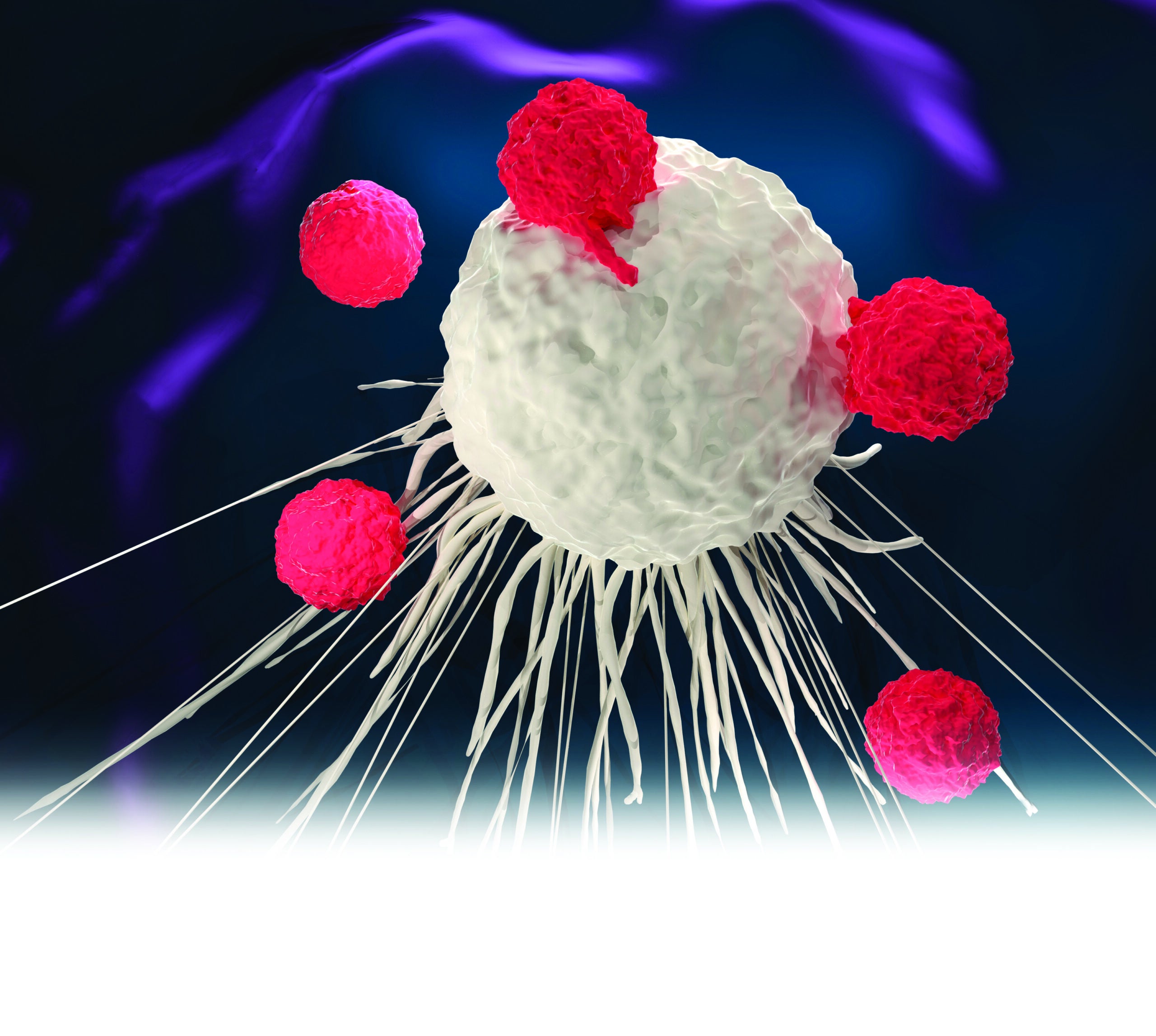
The contract manufacturing industry has changed dramatically since its origins. Bio/Pharma companies have increased their focus on high profit, hard–to-duplicate therapies that are often protected by patent life extensions via government incentive programs. These high profit therapies and investor conditions have continued to increase the market value of Bio/Pharma companies. These same companies are looking for ways to reduce operating expenses and remove excess capacity. This places contract manufacturing organizations (CMOs) under similar pressures to reduce costs, as well as to improve flexibility and efficiency. Contract manufacturers must consider all of the opportunities available in a growingly competitive landscape.
The following are four key trends that GlobalData have identified in the contract manufacturing industry landscape that CMOs and their clients will need to consider and address in the coming year.
Growth of Advanced Therapies
The U.S. Food and Drug Administration (FDA) approved its first two chimeric antigen receptor (CAR)-T cell therapies in 2017: Novartis’ Kymriah (tisagenlecleucel) for the treatment acute lymphoblastic leukemia and Gilead/Kite’s Yescarta (axicabtagene ciloleucel) for large B-cell lymphoma. The industry widely forecasts that these two products will become heavily used allogeneic cell therapies. The FDA approved its first gene therapy—Spark Therapeutics’ Luxturna (voretigene neparvovec-rzyl), a treatment for inherited blindness—in 2018.
Currently, only a few CMOs operate in the cell and gene therapy market. However, this is likely to change in the near future as this form of therapy becomes increasingly more common among both marketed and pipeline drugs (GlobalData, 2018a). Cell and gene therapies are deemed Advanced Therapy Medicinal Products (ATMP) by the European Medicines Agency (EMA), providing a useful distinction for these developments. These ATMPs already form a significant portion of the EU therapeutic pipeline (see Figure 1). The high percentage in Phase 0 is due to the academic origin of many of these therapies.

At present, waiting times for CMOs to commence cell therapy manufacturing projects can be over one year (GlobalData, 2018a). The manufacture of viral vectors, which are commonly used for both cell and gene therapy products, has been a significant obstacle for cell therapy production speed due to its lack of scalability and cost-effectiveness, as well as quality issues and problems with process consistency. The growing cell therapy pipeline means that the process of viral vector manufacturing is in desperate need of improvement. While it is generally agreed that the current scale of viral vector and cell therapy production is sufficient to conduct clinical trials, this volume will not meet commercial needs.
How well do you really know your competitors?
Access the most comprehensive Company Profiles on the market, powered by GlobalData. Save hours of research. Gain competitive edge.

Thank you!
Your download email will arrive shortly
Not ready to buy yet? Download a free sample
We are confident about the unique quality of our Company Profiles. However, we want you to make the most beneficial decision for your business, so we offer a free sample that you can download by submitting the below form
By GlobalDataCMOs have already noted the potential demand and responded accordingly. Large CMO player Lonza is building a cell and gene therapy manufacturing site in Pearland, Texas, U.S.; it is expected to be functional by the end of 2018 and will more than double the company’s production capacity for virally modified cell therapies (GlobalData, 2018e). Lonza will also add new cell therapy manufacturing suites at its Portsmouth, New Hampshire, U.S. site, which are scheduled to be operational in late 2018 (GlobalData, 2018d).
Paragon Bioservices, which is located in Baltimore, Maryland, U.S., is adding a 150,000 square foot process development and Current Good Manufacturing Practice (cGMP) manufacturing facility that will have cell therapy capabilities (GlobalData, 2018g). Cognate Bioservices, which is located in Hanover, Maryland, U.S., opened a new cell therapy facility in Memphis, Tennessee, U.S. earlier this year and plans to add more capacity using capital raised via a management buyout (GlobalData, 2018g). Brammer Bio in Lexington, Massachusetts, U.S. completed an expansion at its 66,000 square foot facility in Cambridge, Massachusetts, which offers clinical and commercial gene therapy manufacture (GlobalData, 2017b).
Continued M&A activity
Constant gains in the stock market have generated the ability for Bio/Pharma companies to acquire other companies. Additionally, the repatriation of overseas cash reserves has boosted the quantity of mergers and acquisition (M&A) deals. Asset divestments are a substantial part of post-merger integration activities, as product lifecycles and differing priorities streamline manufacturing capacity and capabilities. For CMOs, these divestments provide chances to acquire facilities and supply contracts. Furthermore, this liquidity allows private equity companies to be more aggressive in the restructuring of CMOs (GlobalData, 2018c).
CMO acquisitions were eventful in 2017. Patheon, a leading global CMO, was acquired by Thermo Fisher Scientific in August 2017 for $7.2B, and Lonza acquired Capsugel for $5.5B. Hitachi Chemical Advanced Therapeutics Solutions (HCATS – Allendale, New Jersey, US), was formed when PCT Cell Therapy was acquired by Hitachi Chemical Co. in early 2017, making the CMO a wholly owned subsidiary (GlobalData, 2017d).
Serialization Leading to Blockchain
Expert opinion is that the first implementation of blockchain in the pharmaceutical industry will be to enhance supply chain governance. Blockchain is the employment of a digital ledger to record transactions. Blockchain will require the use of serialization, which is a comprehensive system used to follow and find the passage of medicines throughout the whole supply chain. All FDA-regulated therapeutics must comply with the new track-and-trace requirements under the Drug Quality and Security Act (DQSA) (GlobalData, 2014).
According to the draft guidelines, the agency will not seek regulatory actions against companies that do not provide a product identifier on each package of prescription drugs sold before Nov. 26, 2018 (GlobalData, 2017c). However, waivers have been granted to companies that cannot yet comply with these guidelines, and there have been issues concerning the sizing of packaging. These issues must be resolved before the U.S. market is ready for blockchain solutions.
In the EU, the Falsified Medicines Directive (FMD), also known as Directive 2011/62/UE, requires manufacturers to place a unique identifier and an anti-tamper device on each package of pharmaceuticals that is sold. The industry must comply with this directive by February 2019, but only electronic systems will be used by 2023 (GlobalData, 2018f). This will permit the product’s lifecycle to be traced. Once electronically recorded serialization is complete, the industry will be able to implement a blockchain system for medicines.
Trends in API and Dosage CMO Growth
In 2017, a larger than average number of FDA new drug approval (NDA) pathway approvals were outsourced. The 2017 total was just one drug short of the record number of outsourced approvals, which was recorded in 2012 (GlobalData, 2018c). This includes several products that were dual sourced (manufactured both in-house and outsourced). However, the proportion of outsourcing penetration declined because of the growth in FDA NDA approvals.
Outsourcing propensity seems largely dependent on the molecule type of the active pharmaceutical ingredient (API). In 2017, the number of biological API NDAs that were manufactured by contractors continued to decline. In contrast, there was an increasing trend of small molecule drugs being outsourced. Much of the decline in biologic API outsourcing can be attributed to the identity of the sponsor; last year, Global Bio/Pharma companies were responsible for a majority of biologic NDAs. Smaller companies continue to be more likely to outsource manufacturing to contractors compared to larger companies because of their limited manufacturing abilities.
As the molecular complexity of new APIs increases, so too do issues surrounding bioavailability and formulation for products that often have poor solubility or are highly potent (GlobalData, 2018b). As batches are becoming smaller due to an increasing number of orphan drugs and drugs for patient subpopulations, such as pediatrics, the ability for flexible and small-scale manufacturing is becoming particularly desirable.
These trends will also affect dose-related revenue growth and M&A trends, as many CMOs will not have the capability to provide the new technological capabilities required. Many dose CMOs will have to improve their formulation and drug delivery technologies to compete for clients with products that have poor solubility or are highly potent.
Bibliography
- GlobalData (2018a). PharmSource: Cell Therapy Market Opportunity for CMOs – 2018 Edition, June 2018, GDPS0021MAR
- GlobalData (2018b). PharmSource: Contract Dose Manufacturing Industry by the Numbers: Composition, Size, Market Share and Outlook – 2018 Edition, August 2018, GDPS0022MAR
- GlobalData (2018c). PharmSource: CMO Scorecard: Outsourcing of NDA Approvals and CMO Performance – 2018 Edition, April 2018, GDPS0020MAR
- GlobalData (2018d). PharmSource: Bio/Pharma Outsourcing Report May 2018
- GlobalData (2018e). PharmSource: Bio/Pharma Outsourcing Report April 2018
- GlobalData (2018f). PharmSource: Bio/Pharma Outsourcing Report March 2018
- GlobalData (2018g). PharmSource: Bio/Pharma Outsourcing Report February 2018
- GlobalData (2017a). PharmSource: M&A in the CMC Services Industry: Implications and Outlook, April 2017, GDPS0017MAR
- GlobalData (2017b). PharmSource: Bio/Pharma Outsourcing Report December 2017
- GlobalData (2017c). PharmSource: Bio/Pharma Outsourcing Report August 2017
- GlobalData (2017d). PharmSource: Bio/Pharma Outsourcing Report May 2017
- GlobalData (2016). PharmSource: Bio/Pharma Outsourcing Report December 2016
- GlobalData (2014). PharmSource: Bio/Pharma Outsourcing Report Jan 2014








Related Company Profiles
Showa Denko Materials Co Ltd
Minaris Regenerative Medicine LLC
Capsugel LLC
Global BioPharma Inc
Paragon Bioservices, Inc.